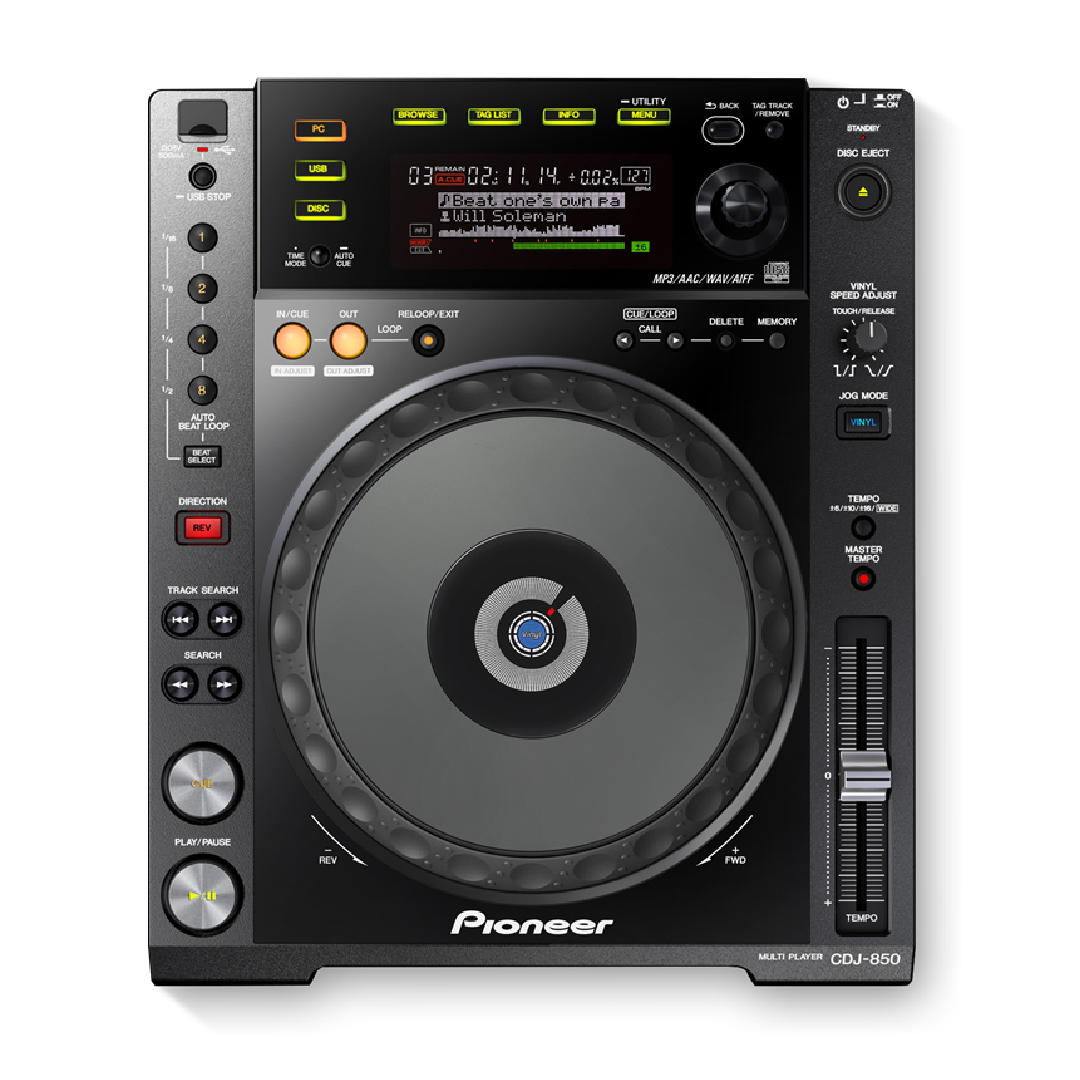Pioneer CDJ 850 Digital deck with full scratch jog wheel and rekordbox support (black)
USB PLAYBACK
It still plays your MP3, AAC, WAV and AIFF files stored on USB devices.
DJ mixers are usually much smaller than other mixing consoles used in sound reinforcement systems and sound recording. Whereas a typical nightclub mixer will have 24 inputs and a professional recording studio‘s huge mixer may have 48, 72 or even 96 inputs, a typical DJ mixer may have only two to four inputs. The key feature that differentiates a DJ mixer from other types of larger audio mixers is the ability to redirect (cue) the sounds of a non- playing source to headphones, so the DJ can find the desired part of a song or track and the presence of a crossfader, which allows an easier transition between two sources (or, for hip hop music turntablists, enables them to do scratching effects).
A crossfader has the same engineering design as fader, in that it is a sliding control, but unlike faders, which are usually vertical, crossfaders are usually horizontal. To understand the function of a crossfader, one can think of the crossfader in three key positions. For a DJ mixer that has two sound sources connected, such as two record turntables, when the crossfader is in the far left position, the mixer will output only turntable A’s music. When the crossfader is in the far right position, the mixer will output only turntable B’s music. When the crossfader is at its midpoint (which is always marked with a horizontal line), the mixer will output a blend of turntable A’s music and turntable B’s music. The other points along the crossfader’s path produce different mixes of A and B.
DJ mixers typically have phono preamplifiers to hook up turntables. The signal that comes directly out of a vinyl turntable is too weak to be amplified through a PA system. Before a turntable can be usable in a mix, it needs to be preamplified. DJ mixers are also used to create DJ mixes, which are recorded and sold. DJ mixers usually have equalization controls for bass and treble of each channel. Some 2010-era DJ mixers have onboard electronic or digital effects units such as echo or reverb. Some DJ mixers also feature a built-in USB sound card to connect to a computer running DJ software without requiring a separate sound card. DJ mixers typically have a microphone input, so that a microphone can be plugged into the mixer, enabling the DJ to announce songs or act as a master of ceremonies (MC) for an event. Some DJ mixers have a kill switch, which completely cuts out a channel, or, on some models, completely cut out a frequency band (e.g., all the bass)

